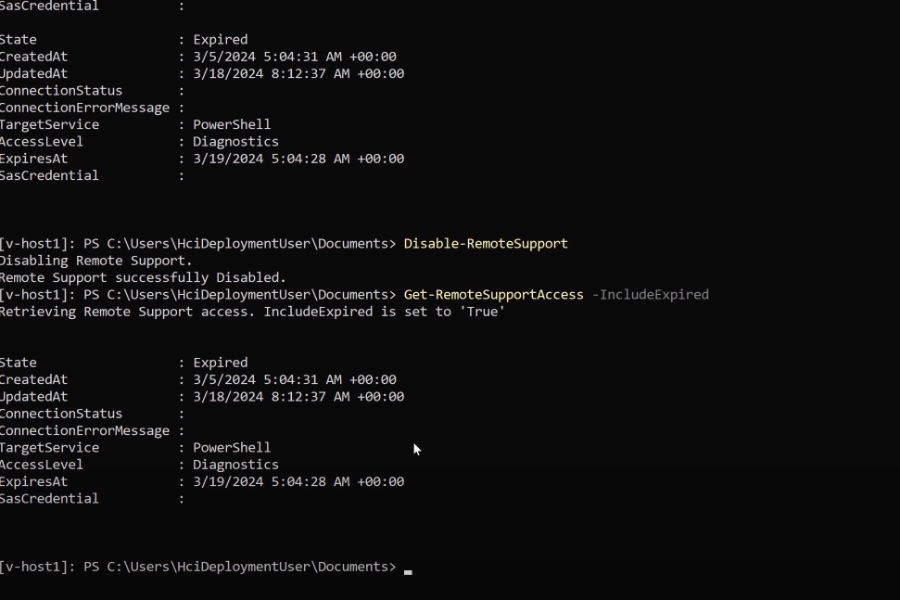
Enhance Your Azure Stack HCI Monitoring
Principal Cloud Solutions Architect
Unlock Azure Stack HCI Observability: Optimize Your Hybrid Cloud with Integrated Monitoring & Insights.
Key insights
- Azure Stack HCI Observability enhances monitoring, management, and insights for Azure Stack HCI, going beyond traditional methods.
- Integration with Azure Arc allows management of on-premises environments using Azure's cloud-based tools, offering a unified monitoring approach.
- Provides comprehensive monitoring and analytics, including detailed metrics and logs for infrastructure components like hardware and virtual machines.
- Includes performance metrics for proactive management and troubleshooting, aiding in capacity planning and performance optimization.
- Features health monitoring and alerting capabilities, update management, and integration with Azure Monitor for advanced analytics and telemetry data analysis.
Azure Stack HCI Observability: A Deeper Dive into Hybrid Cloud Management
The concept of observability within Azure Stack HCI represents a significant evolution in the monitoring and management of hybrid cloud systems. It is built on the understanding that modern infrastructures are complex and require more sophisticated tools and methodologies for their operations. Observability stands out by offering a holistic view of system performance, health, and operational status, transcending traditional monitoring to incorporate insights and analytics derived from integration with advanced cloud services.
Implementing Azure Stack HCI Observability translates into substantial benefits for organizations. These advantages include the ability to preemptively identify and resolve potential issues before they escalate into more significant problems, thus maintaining operational integrity and minimizing downtime. The integration with Azure Arc and Azure Monitor connects on-premises infrastructure with powerful cloud-based management and analytical tools, enabling a seamless operational flow between cloud and on-premises environments.
The significance of Azure Stack HCI Observability also lies in its capacity for deep troubleshooting and capacity planning. By leveraging performance metrics and log analytics, it equips administrators with the information needed to make informed decisions about infrastructure expansion, optimization, and troubleshooting. This level of insight is invaluable for maintaining high-performance levels and ensuring infrastructure responsiveness to business needs.
Moreover, the focus on update management within Azure Stack HCI Observability ensures that infrastructures are not just performant but also secure. By facilitating the deployment of the latest software versions and patches, it plays a critical role in protecting against vulnerabilities and ensuring compliance with security standards.
In conclusion, Azure Stack HCI Observability is not just a toolset but a comprehensive approach to hybrid cloud infrastructure management. It signifies a shift towards more integrated, analytics-driven operations, offering administrators the capabilities needed to maintain, optimize, and secure their environments effectively. As hybrid cloud systems continue to evolve, the importance of observability as a core aspect of infrastructure management is set to grow, making it a vital component for any organization looking to leverage the full potential of their hybrid cloud solutions.

People also ask
What is the HCI model for Microsoft Azure stack?
Azure Stack HCI represents a hyperconverged infrastructure solution that integrates validated hardware to facilitate the operation of virtualized workloads in an on-premises environment. This solution allows users to optimize older infrastructure while providing a seamless link to Azure for the utilization of cloud-based services.What is the difference between Azure stack and Azure stack HCI?
Though Azure Stack HCI and Azure Stack Hub pursue similar goals, they diverge in their operational mechanisms, infrastructure necessities, and preferential applications. Azure Stack HCI is particularly advantageous in environments demanding flexibility, a reduced server footprint, enriched access to Hyper-V functionalities, and support for AVD (Azure Virtual Desktop).What are the benefits of Azure stack HCI?
Azure Stack HCI stands out by delivering top-tier virtualization performance and value. The financial model is advantageous as it operates on a monthly payment basis through an Azure subscription, rather than requiring upfront hardware investment. Furthermore, it presents a familiar landscape for administrators proficient in Hyper-V and server management, enabling them to apply their existing knowledge of virtualization and storage techniques effectively.When should a customer use Azure Stack HCI instead of Windows Server?
Customers are advised to opt for Azure Stack HCI when seeking the most efficient virtualization host to evolve their infrastructure. This is applicable whether the focus is on accommodating present workloads within the principal data center or addressing the novel demands at branch offices and edge locations.
Keywords
Azure Stack HCI Observability, Azure Observability, HCI Monitoring, Azure Stack HCI Management, Hybrid Cloud Infrastructure, Azure Stack Performance, Azure Stack HCI Solutions, Azure Stack HCI Dashboard